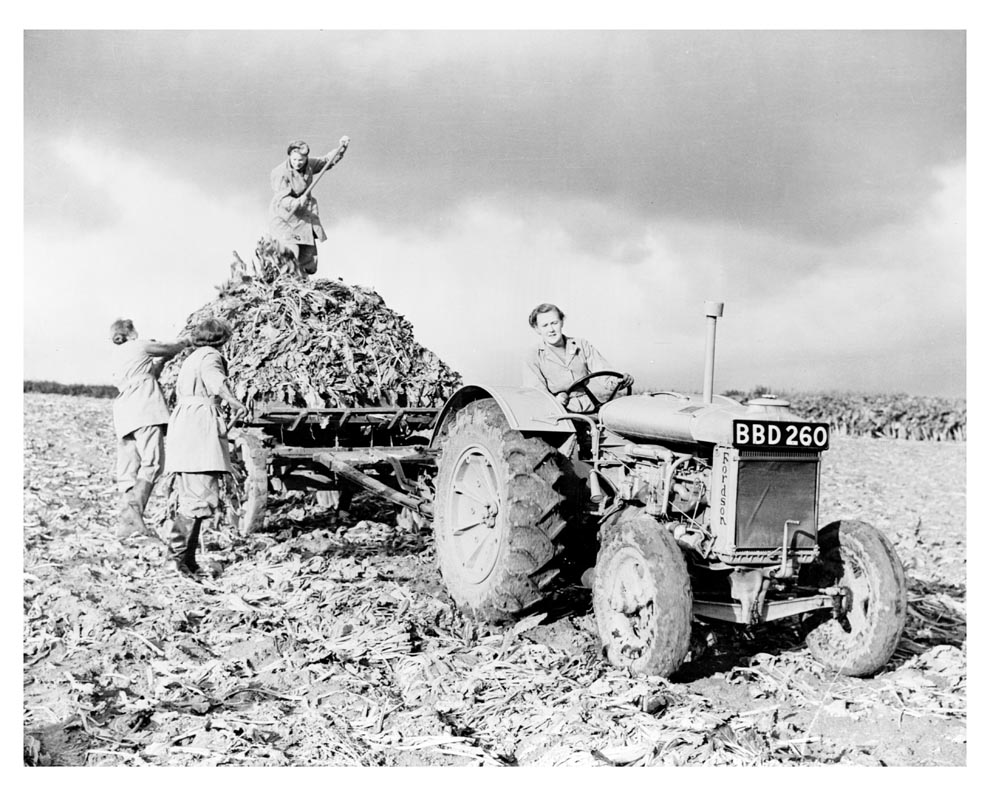
In a 2013 copy of “This England” magazine, I read about the Women’s Land Army (WLA) of World War II. It was a British civilian organization to bring women to the farms and fields to help the war efforts while their men were with the military service.
The government wanted to increase the food grown within Britain. Through the Ministry of Agriculture and Fisheries, the Women’s Land Army had as the honorary leader, Lady Denman.
At first, volunteers did the work. It was supplemented by conscription so that by 1944 there were more than 80,000 members. The WLA officially was disbanded October 21, 1949.
At its beginning, only single women between the ages of 20 and 30 were accepted. Later the age was expanded and women between 19 and 43 were included. They worked long hours, mostly outdoors, and even in the rain and cold. They drank tea brought out to the fields in open buckets.

They wore an official Land Army uniform of green jumper, brown breeches, brown felt hat, and khaki overcoat. There was an official magazine, The Land Girl and a song to keep their spirits up. “Back to the land, we must all lend a hand, to the farms and fields we must go. There’s a job to be done.”
The official wage for a Land Girl was just over one pound an hour for a minimum of 50-hour week. In 1944 wages were increased to two pounds, 17 schillings. It was paid by the farmer. Some lived in nearby cottages paying 23 pounds rent out of their modest weekly pay.
The Land Girls picked crops and helped with the harvest. They learned to milk cows, make hay, cut kale, pick potatoes, all the while dodging Buzz Bombs. They felt they were doing their part for “our ultimate victory.”
Britain’s prime minister, Winston Churchill, feared that victory might never come because the U-boat menace had consigned 400 Allied ships to the bottom of the sea within the first seven months of hostilities. There were2,426 British merchant ships alone with a gross tonnage of more than 11 Million were sent to the sea depths.
There were rough moments.
One day the German V1s were coming over the sea and were pursued by RAF (Royal Air Force) Tempest fighter planes as the pilots tried to get their wing tips under the unmanned flying bombs and turn them back toward France. The day that a V1 got through and was headed for the farm, some of the girls took refuge in the lambing pen. The Doodlebug came down in the nearby field and exploded with a huge bang. The only casualties were 42 rabbits, recounted Betty. “We ate rabbit pie for a week afterward,” she remembered.
The Land Girls had little social life because getting up at five in the morning prohibited dancing the night away. “But, I wouldn’t have changed my time on the land for all the world,” another Land Girl said.
Another branch was set up for forestry industry work. Officially known as Women’s Timber Corps, the 6,000 members were known as “Lumber Jills” until it was disbanded in 1946. They helped run saw mills to produce vitally-needed timber for the war effort.
In 2007 the efforts of the Women’s Land Army and the Women’s Timber Corps formally were recognized with the presentation of a specially designed commemorative badge to the surviving members. The badge of honour was awarded in 2008 to more than 45,000 former Land Girls.
In 2012 the Prince of Wales unveiled the first memorial to the WLA in Scotland. In 2014 a memorial statue was unveiled at the National Memorial Arboretum in Staffordshire. England.

